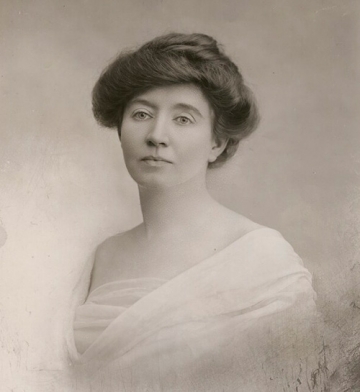Kitty Marion
The full resource is FREE to all registered users of the website
If you are not already registered you can sign up for FREE website access to download the full resource.

- Born: 1871
- Died: 1944
- Occupation: actress
- Claims to fame: one of the early female writers on a newspaper
Early life
Katherina Maria Schafer was born in Germany, but, in 1886, she moved to London to be with an aunt. After learning how to sing and dance, she became a performer in the music halls as Kitty Marion. After a sexual assault, she joined the Actresses’ Franchise League and then the WSPU in 1908.
As a suffragette Kitty became very active and took part in deputations to the House of Commons and in selling WSPU newspapers on the street. Kitty was arrested in 1909 for throwing a brick through a post office window in Newcastle. She would be arrested and imprisoned many times more. Once, Kitty heckled the future prime minister, politician David Lloyd George, who was speaking in Wrexham, where she ‘received blows and abuse from every side, my hat being torn off and my hair pulled’ by an angry crowd.
In 1913, Kitty was arrested for arson and sentenced to three years in prison with hard labour. She went on hunger strike and was forcibly fed twice a day, every day – a staggering 232 times – before she was released under the ‘Cat and Mouse Act’. In a letter written in prison, she described how her hair was ‘falling out dreadfully’ because of the conditions. In 1914, Kitty was on the run after being released from prison when war was declared, and all the suffragettes were offered an amnesty. Anti-German attitudes made life difficult for Kitty. The government intended to deport Kitty, and some of her friends raised funds for her to travel to the USA. She spent most of the rest of her life there, joining the campaigns for birth control and women’s rights.
Glossary
- Deputation – leading a group without permission to demonstrate at the House of Commons
- WSPU newspapers – women received verbal abuse and sometimes physical attacks from hostile passers-by when selling these newspapers.
Questions
- Were her actions important to the campaign?
- Why did she experience anti-German comments from people?
- Why might she have kept a scrapbook about her own and other suffragists’ actions?
Useful links/resources:
Elizabeth Crawford, The Women’s Suffrage Movement: a reference guide, 1866–1928 (Routledge, 1999)
